Most downspouts simply aren’t good-looking. Here’s how to transform the system that protects your foundation into an eye-catching asset.
A Nose for Drainage
Elephants love playing in water, and this pair of pachyderms is no exception. Made of copper and featuring tusks made of bull (cow) horns and glass eyes, these fully functional downspouts (about $2,000 each) will channel rain water in high style. Hook ‘em up to your gutters or leave ‘em as exterior wall ornaments that show your wild (life) side.
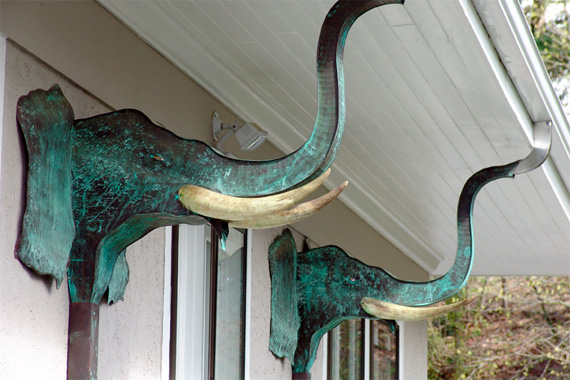
Credit: Art of Rain

Credit: Art of Rain
Modern Aesthetic
In the Pacific Northwest, dealing with rain is a key component of house design. The architects of this residence on Puget Sound created pairs of sleek galvanized steel tubes that look more like structural elements than downspouts. This pair of downspouts empties well away from the house foundation to avoid any drainage problems.
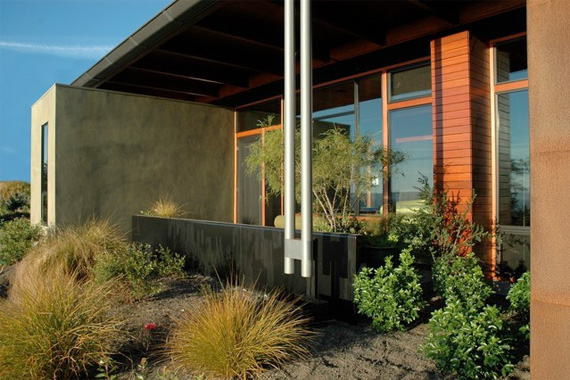
Credit: Jim Van Gundy

Credit: Jim Van Gundy
Direct Deposit
Here’s one way to put nature’s free water to good use — let downspouts dump directly into a planter. This handsome copper gutter and downspout empties into a sizeable stone patio planter full of hostas and ornamental grasses. Built-in planters should have a drain hole facing away from your house to keep excess water from soaking the soils around your foundation.
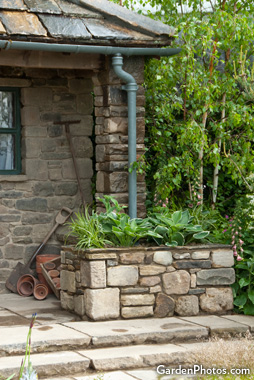
Credit: Judy White/GardenPhotos.com
Source: Houselogic

Credit: Judy White/GardenPhotos.com
Living Rain Storage
What appears to be a column of ivy growing up a wall trellis is actually a rain harvesting system designed to capture gutter runoff. A tank concealed by the greenery stores water and slowly releases it for use by climbing plants that scale the stainless steel framework. A 70-inch-high system with a 60-gallon capacity is $1,107. Additional 30-gallon add-ons are $429.
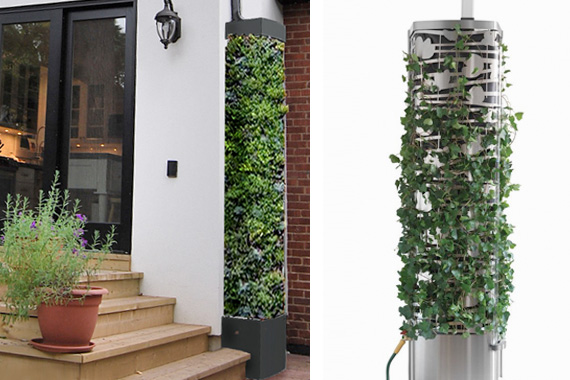
Credit: Moss Sund Architects

Credit: Moss Sund Architects
Custom Metal Work
A specially-made gutter and downspout system from a sheet metal fabricator adds architectural flair to your home. The flared opening at the top of the downspout is called a leader box; this one is made of copper and costs about $150. A complementary 2-by-3-inch copper downspout runs about $16 per foot.
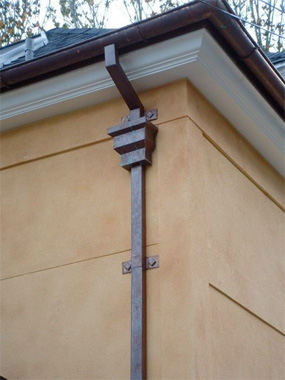
Credit: Liberty Sheet Metal

Credit: Liberty Sheet Metal
Singin’ In the Rain
Downspout rainwater sluicing through this giant, 14-foot-high copper treble clef turns a water wheel, which powers a music box that plays Canon in D major. Don’t fret — you can choose other musical backgrounds as well. The base price is $3,000.
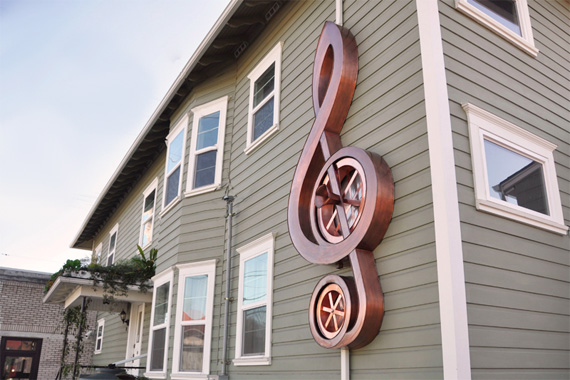
Credit: Art of Rain

Credit: Art of Rain
Grand Opening
Give your rainwater a proper sendoff with a cast-resin gargoyle downspout ($50). This mouthy fellow has a 3-by-5-inch opening so it won’t get clogged. Make sure your downspout sends water away from your foundation; this one opens onto a sloped tile patio that carries water away from the house.
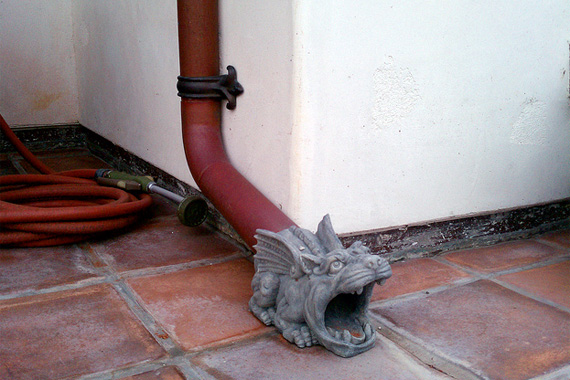
Credit: Rain Water Systems

Credit: Rain Water Systems
The Wright Way
The Darwin Martin house in Buffalo, N.Y., is one of Frank Lloyd Wright’s best examples of Prairie School architecture. Wright wasn’t about to let practicality get in the way of the strong horizontal lines of his design, so he made the downspouts disappear into the support columns and exit out the base of the foundation walls. Good for visual appeal; tough when it comes to replacing downspouts.
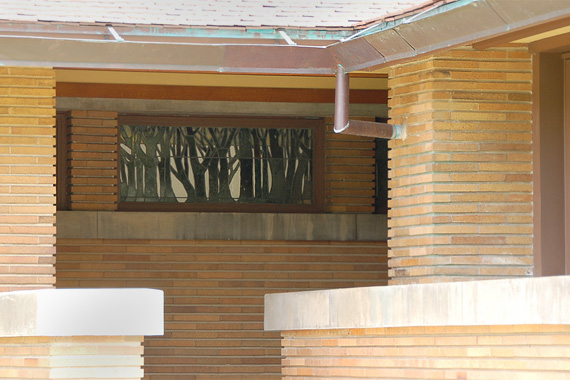
Credit: Michael Dailey

Credit: Michael Dailey
A Cup of Rain, Anyone?
Originating in Japan hundreds of years ago, rain chains are a decorative alternative to the humble (and usually boring!) downspout. Rainwater clings to the chain links and dances its way down to the ground, where a splash block channels water away from your foundation. This imaginative polished copper tea set is $111 for an 80-inch chain, teapot, and four cups.
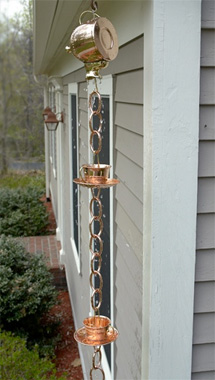
Credit: Mike Lodato

Credit: Mike Lodato
Harvesting Rain
Part of an urban Seattle project called “Growing Vine Street,” this apartment downspout system channels rainwater through built-in planters. The planters act as bio-filters to remove pollutants before runoff can enter natural waterways. Hardy grasses and succulents that grow in the planters also help evaporate storm water, reducing the amount of runoff.
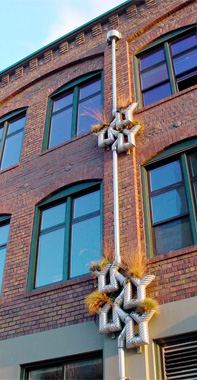
Credit: Downspout art by Buster Simpson

Credit: Downspout art by Buster Simpson
Source: Houselogic

No comments:
Post a Comment